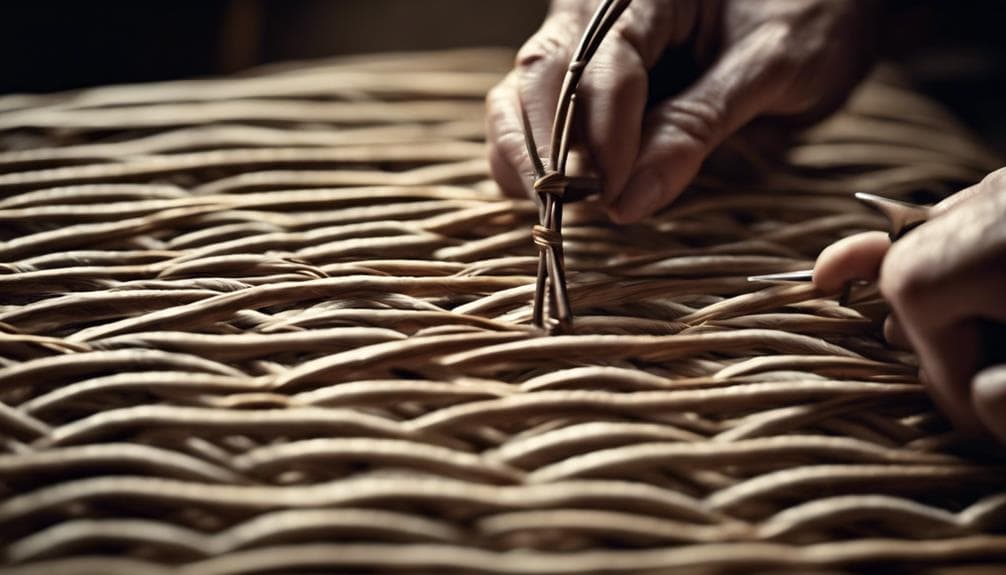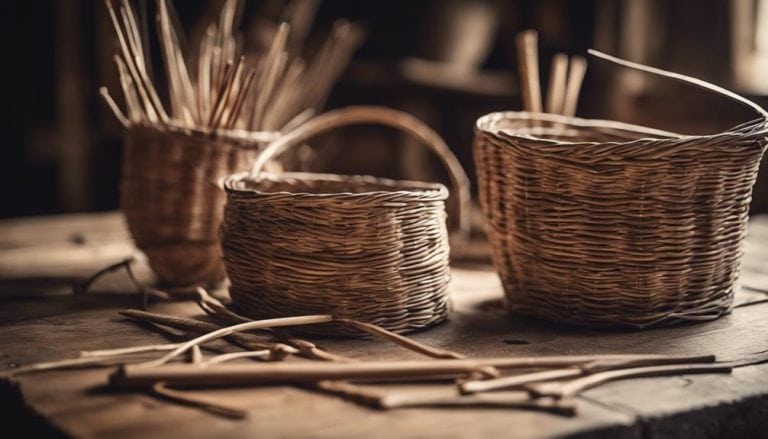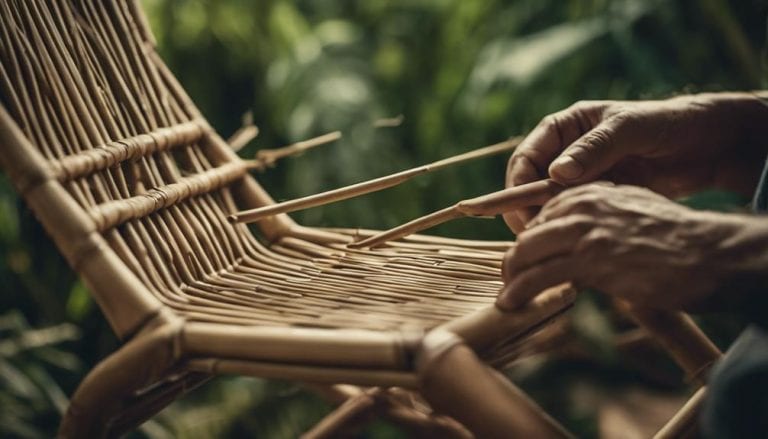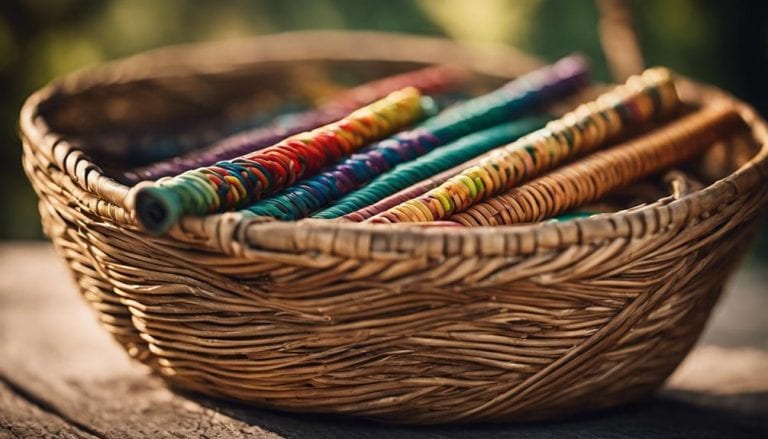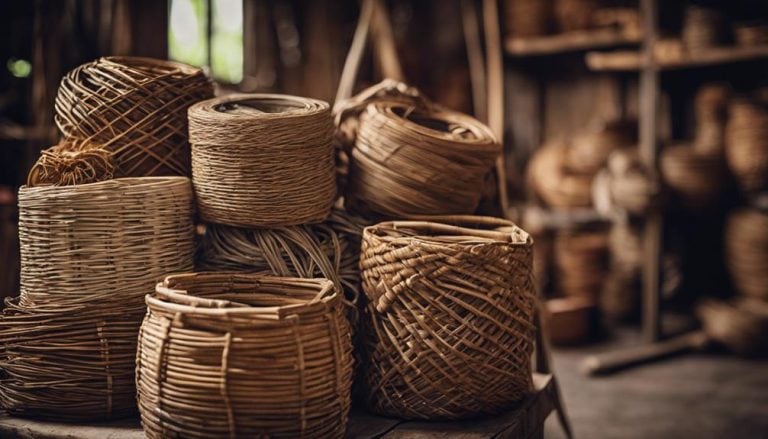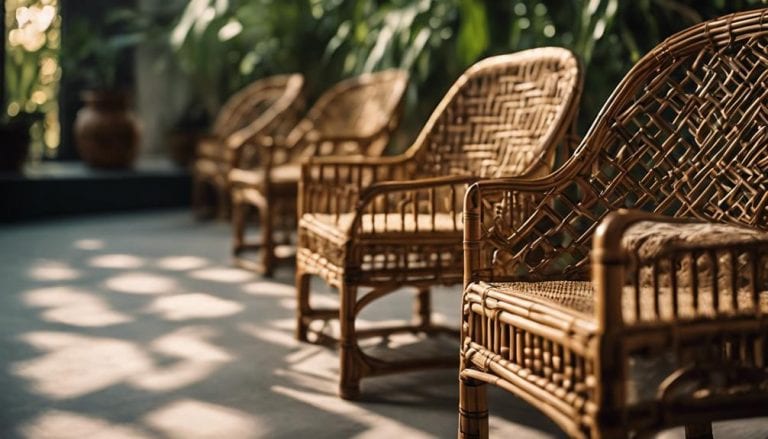Using Rattan Cane for Danish Cord Weaving
I’ve woven enough Danish cord to circle the earth twice, and yet, each time I pick up rattan cane, I discover something new about its versatility and strength. This ancient material, steeped in history, offers a unique challenge and satisfaction that modern materials can’t match.
Whether you’re a seasoned weaver or new to the craft, understanding how to prepare and weave rattan cane properly is crucial. But there’s more to it than just technique. The real magic lies in the subtle nuances that can make or break your project. Stick around, and I’ll share insights that might transform your approach to this fascinating craft.
When weaving Danish cord, utilizing rattan cane as a material offers durability and flexibility, Rattan cane’s natural strength and pliability make it ideal for creating intricate and sturdy Danish cord designs.
Key Takeaways
- Rattan cane’s flexibility and durability make it ideal for Danish cord weaving projects.
- Its natural elegance and minimal maintenance needs enhance any space with bespoke decor pieces.
- The weaving process allows for creative expression through intricate patterns and artistic innovation.
- Historically rooted in Danish design, rattan cane weaving combines functionality with timeless appeal.
The Appeal of Rattan Cane
The allure of rattan cane lies in its robust and supple nature and its elegant texture to Danish cord-weaving projects, making it a coveted material among artisans. Its natural elegance is undeniable; when I weave with a rattan cane, each strand tells a story of resilience, bending and twisting to form patterns that speak to tradition and innovation. With its light and airy feel, this material allows me to craft furniture that seems almost ethereal yet stands strong against the test of time.
As someone deeply committed to sustainability, the fact that rattan cane is a sustainable material adds to its appeal. Sourced from climbing palms with minimal environmental impact, it reassures me that my art respects the delicate balance of our ecosystem. Working with rattan, I feel a connection to the earth, a reminder that true beauty is best when it’s responsible.
Moreover, rattan’s natural resistance to humidity and temperature changes ensures the pieces I create are beautiful and durable. This resilience mirrors the essence of natural elegance, making rattan cane an indispensable ally in my quest to create timeless pieces that resonate with both heart and soul.
Historical Context of Danish Cord
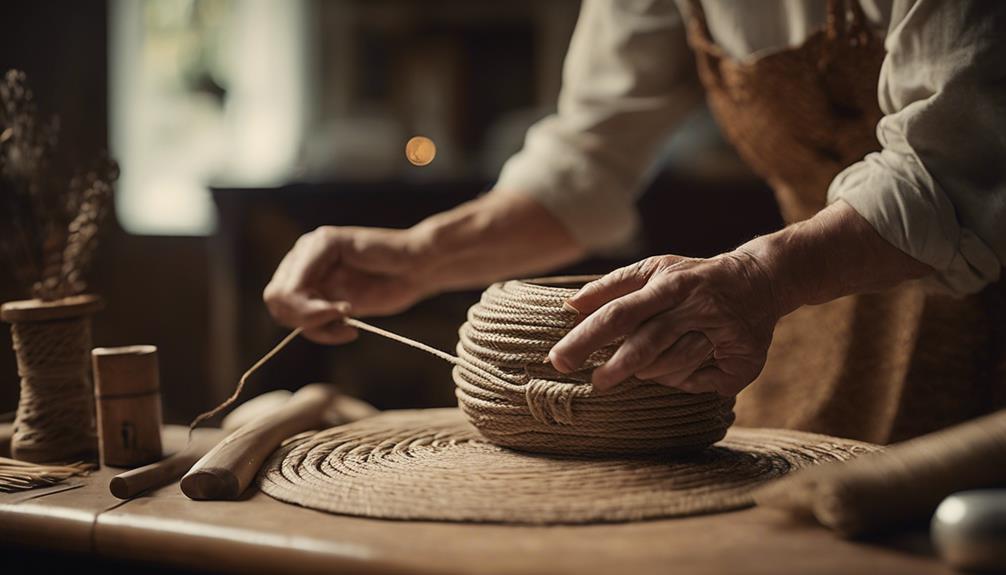
Exploring the origins of Danish cord weaving reveals its early 20th-century roots in Denmark, where artisans first adopted rattan cane for its unmatched durability and flexibility in creating chair seating. This artistry, deeply ingrained in the fabric of Scandinavian culture, represents more than just a method; it’s a testament to the evolution of design. As I’ve delved deeper into this craft, I’ve come to appreciate how rattan cane, with its sustainable qualities, harmonized with the era’s minimalist ethos, crafting beautiful and pragmatic pieces.
The journey of Danish cord weaving, intertwined with rattan cane, reflects a broader narrative of global influences shaping Scandinavian design. It’s fascinating to see how this method, rooted in Danish tradition, embraced the principles of functionality and simplicity, values that have resonated worldwide. This global admiration underscores the universal language of design, where form meets function in the most elegant ways.
As I weave, I’m reminded of this rich history and the global tapestry of design influences that Danish cord weaving embodies. It’s a craft that tells a story of innovation, sustainability, and the timeless appeal of Scandinavian aesthetics.
Comparing Rattan to Traditional Materials
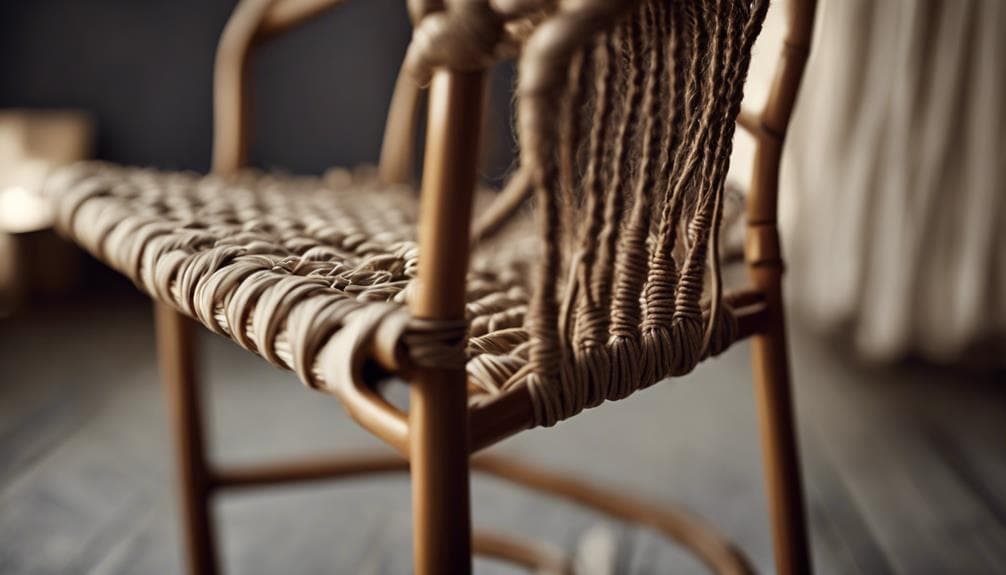
Reflecting on the historical elegance and sustainability of using rattan cane in Danish cord weaving, it’s imperative to compare its virtues with traditional materials like cotton or jute. As someone deeply immersed in the art, I’ve observed firsthand the unique qualities rattan brings.
- Durability Comparison: Rattan cane outshines its traditional counterparts in durability. Where cotton and jute may fray or weaken over time, rattan maintains its integrity, promising furniture that lasts longer and retains its beauty. This resilience against wear and tear makes it a prudent choice for artisans and enthusiasts.
- Comfort Benefits: The smoothness of rattan cane offers an unmatched seating experience. Unlike the rougher textures of cotton or jute, rattan weaves create a surface that gently cradles the body, enhancing the furniture’s comfort without sacrificing style.
- Environmental Impact: Embracing rattan cane is to embrace sustainability. It’s a material that grows quickly, minimizes ecological footprints, and stands up to moisture and humidity, making it ideal for various climates and settings.
In weaving with rattan, we’re not just crafting furniture; we’re weaving together tradition, sustainability, and comfort.
Preparing Rattan for Weaving
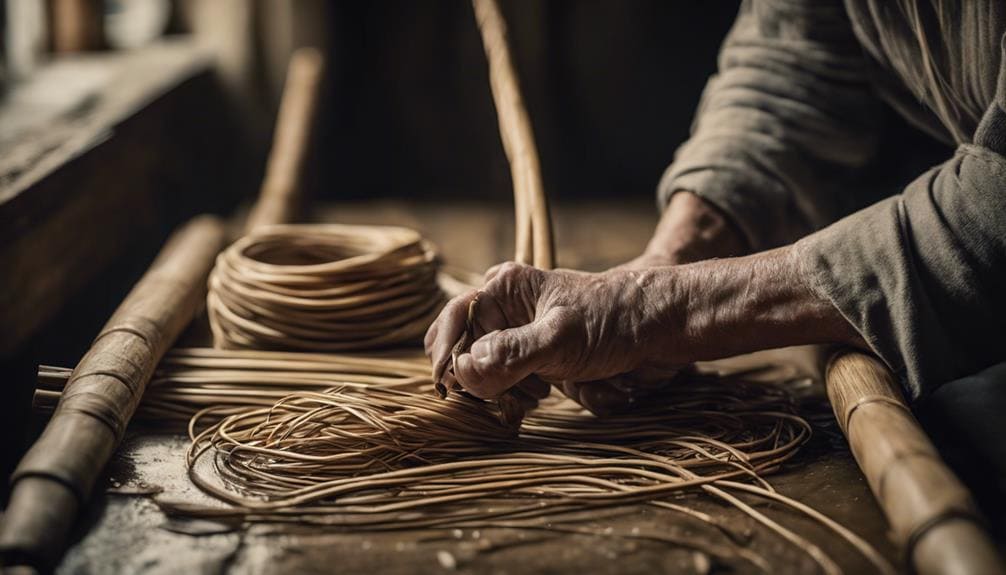
Before weaving a masterpiece from rattan cane, one must meticulously prepare the material, ensuring its flexibility and smoothness for the task ahead. The ritual begins with soaking the cane in warm water for precisely 30 minutes, a step essential for increasing flexibility. This immersion transforms the rattan, making it yield to my intentions with grace.
After the soak, I cut the cane into lengths that whisper promises of the shapes they will soon form. Each piece is a testament to the vision I hold in my mind’s eye, carefully measured and snipped with a precision that feels almost sacred.
Next, I straighten each strand, gently coaxing it into alignment by bending it softly in the opposite direction of any natural curves. This act of straightening is not just physical but almost a dialogue, an understanding reached between creator and creation.
Smoothing edges comes next, a tender process where I eliminate any roughness or splinters. This step ensures that the cane’s surface is as inviting to the touch as it is appealing to the eye.
Weaving Techniques and Tips
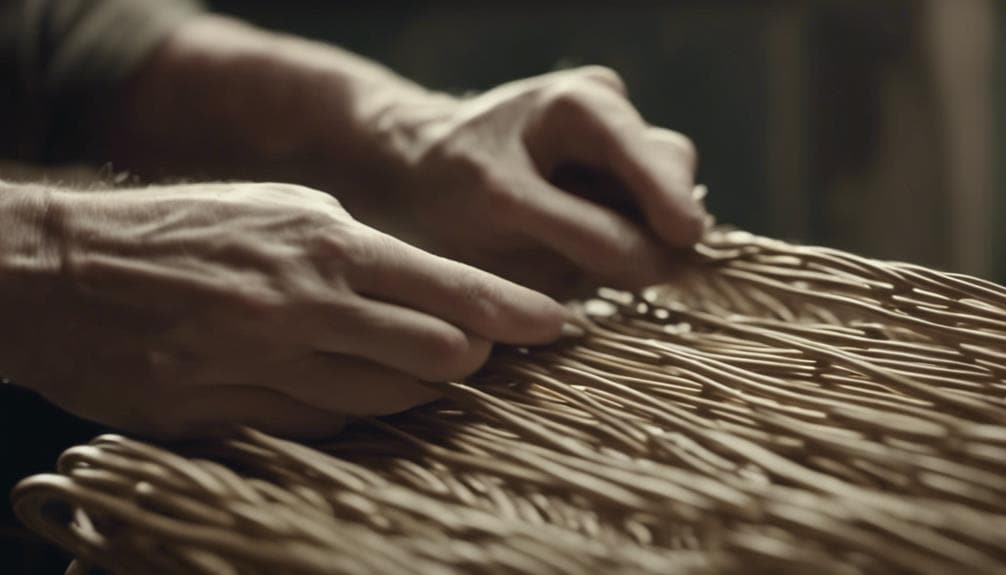
As we delve into the heart of weaving with a rattan cane, mastering a two-strand technique emerges as the cornerstone for beginning the first row, ensuring both stability and a structure that whispers of durability and grace. With each movement, I find harmony between tradition and innovation, blending ancient methods with my whispers of creativity.
To paint a vivid picture, let me outline the essentials:
- Maintaining Consistent Tension: It’s not just about pulling; it’s a dance of pressure and release. This ensures each weave is as uniform as the last, creating a canvas of impeccable integrity.
- Doubling the Strands: This little trick is my secret to added strength at each row’s end. It’s a testament to the resilience woven into every fiber, a nod to the enduring nature of well-crafted pieces.
- Overlapping Pattern Wrap: This method isn’t just about aesthetics; it’s the backbone of our creation. Each overlap is a step towards a masterpiece, a sturdy base from which beauty and functionality bloom.
In this journey, advanced patterns become second nature, and weaving tools are extensions of my hands. Maintenance tips and troubleshooting techniques are woven into the very fabric of my work, ensuring each piece isn’t just made but lovingly crafted.
Caring for Rattan Furniture
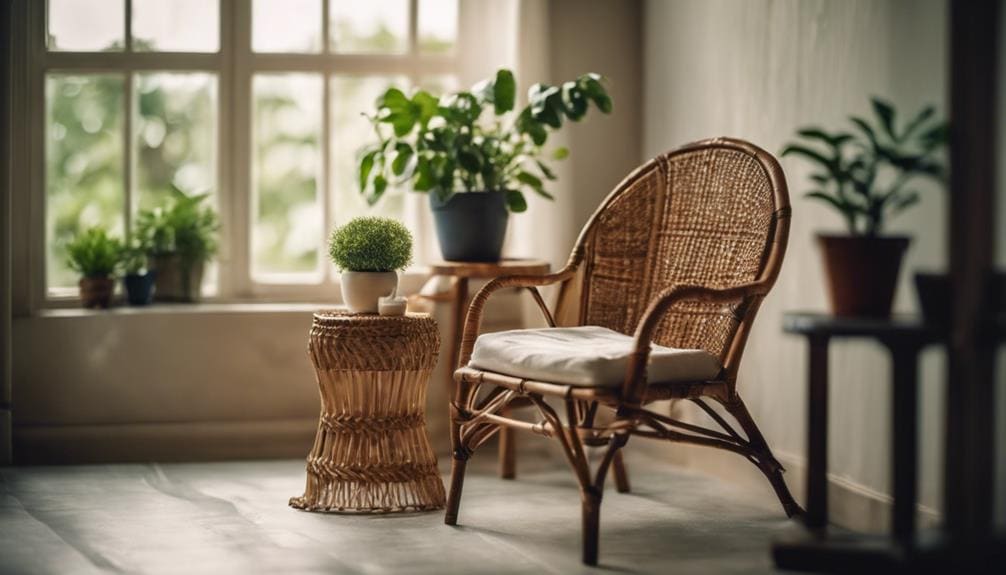
Having explored the intricacies of weaving with a rattan cane, it’s crucial to shift our focus towards preserving the beauty and longevity of our creations through proper care. Sustainable maintenance isn’t just about retaining their structural integrity; it’s an ode to the craftsmanship and dedication poured into each piece. A few simple practices are essential to ensure these decorative accents remain a testament to our work.
Regularly, I gently brush away the dust and debris with a soft cloth, mindful not to disrupt the delicate weave. I’ve learned that direct sunlight and heat sources are foes to rattan’s natural beauty, causing drying and cracking that’s hard to reverse. Instead, I opt for a mild soap solution for cleaning, steering clear of harsh chemicals that can mar its surface.
I occasionally apply a clear lacquer or varnish to shield my pieces further, creating a protective barrier against moisture and wear. And when the seasons turn harsh, I bring my rattan treasures indoors, safeguarding them from extreme weather that could compromise their appearance. This careful approach ensures my rattan furniture remains functional and a cherished decorative element in my home.
Creative Projects With Rattan Weaving
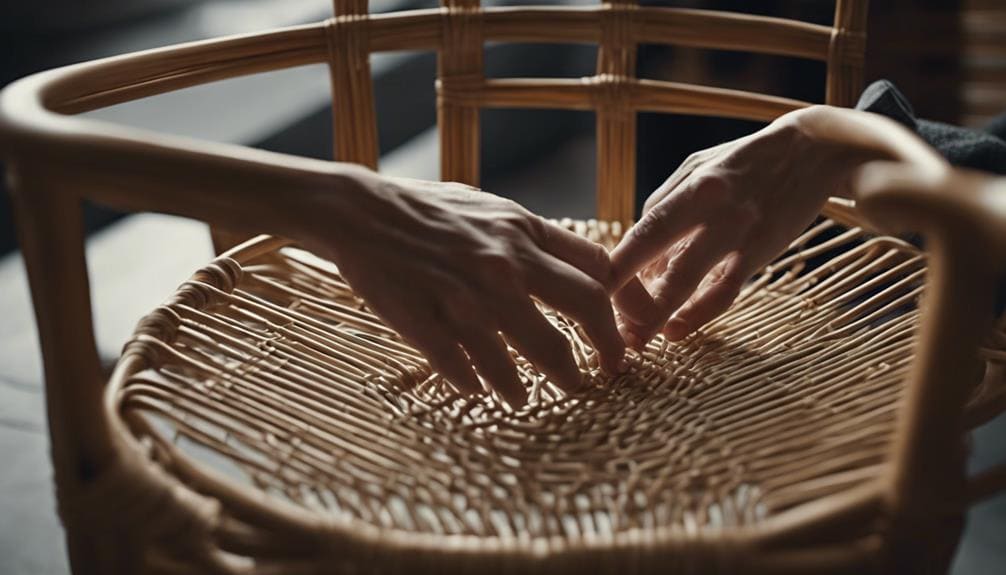
Diving into the world of rattan weaving unlocks a treasure trove of creative projects, from intricately patterned furniture to bespoke decor pieces that radiate natural charm and sophistication. As I’ve journeyed through Danish cord weaving, I’ve discovered that rattan cane is not just a material—it’s a canvas for artistic innovation and design exploration. The flexibility and durability of rattan have allowed me to push the boundaries of traditional patterns, embarking on an adventure of texture experimentation and pattern creation.
Here’s a glimpse into the projects that have captivated my heart:
- Intricately Woven Lampshades: Transcending the mundane, these lampshades blend light and shadow in a dance of complexity and elegance, showcasing the depth of texture experimentation.
- Sculptural Furniture Pieces: Each piece is a testament to the limitless possibilities of pattern creation, marrying functionality with artistic expression in a way that transforms spaces.
- Custom Wall Art: This is where design exploration shines, turning walls into galleries of natural beauty and woven narratives.
Rattan weaving has been my portal to a world where every twist and turn of the cane results in something unexpectedly beautiful, proving time and again that the only limit is one’s imagination.
Frequently Asked Questions
How Do You Weave a Danish Cord?
I start weaving by looping the cord, ensuring tension. My technique involves intricate patterns and selecting the best materials for durability and aesthetics. It’s a labor of love, creating something truly unique and personal.
What Is the Nail Spacing for Danish Cord Weaving?
I’ve found that the ideal nail spacing for Danish cord weaving is 5/8 inches apart. This precise spacing ensures the cane’s durability and supports intricate weaving patterns, resulting in a beautifully crafted, intimate piece.
How Long to Soak Cane Before Weaving?
Soaking the cane for 12 to 48 hours is essential for preservation, offering flexibility that whispers through my fingers. Alternatives pale beside this intimate dance of preparation, ensuring each weave breathes with life.
What Is the Difference Between Laced and Unlaced Danish Cord?
I’ve discovered that laced Danish cord, demanding meticulous finishing techniques, enhances cord durability, while un-laced offers a simpler, intimate essence. Each style speaks to the artistry and complexity desired in our weaving projects.
Conclusion
As I finish weaving the final strand of rattan, a sense of accomplishment washes over me. Coincidentally, it’s exactly three years to the day since I began my journey with Danish cord weaving. The rhythmic motion of wrapping and securing the cord has become a meditative practice, each piece a testament to patience and skill. Caring for these creations brings me joy, knowing they’ll endure for years. Rattan, with its flexibility and strength, has shaped not just furniture but also, in a way, me.

